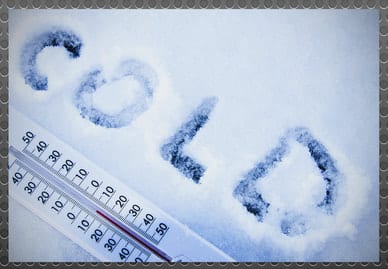- About Us
- Our Services
- Training Expertise
- Crisis Management for Business & Industry
- DOT PHMSA ALERT Rail Car Training
- Emergency Management
- Environmental & HAZMAT
- First Response & HAZWOPER
- Maritime Security
- OSHA Training/Confined Space
- RDPC
- Safer News Gathering
- Safer Ohio Schools Using Threat Assessment Management
- School Safety & Security
- Workplace Violence Prevention
- Courses
- Our Clients
- Media
Safe Work On The Coldest Of Days

The new year is here, and for much of the country, 2018 enters with an icy greeting. Much of the country has been gripped by bitterly cold temperatures and heavy and continuous snowfall (in record levels in some places). The remainder of this week, as people return to work, is expected to bring similar weather-related hazards in many places. In some cases, work scheduled for exterior environments can be rescheduled for days with kinder forecasts. But many outdoor tasks cannot wait, so employees will find themselves – this week and in the remaining winter months – struggling to stay on schedule and work safely, due to the weather.
Kelsey Rzepecki has contributed a worthwhile article to Constructionpros.com that can benefit EHS managers in a range of industries, including chemical production and transportation.
Among the points stressed in the piece is the importance of workers recognizing the personal dangers of extreme cold. Low temperatures, for example, are not always the measure of winter impact. The wind chill factor must be considered before any outdoor activities are allowed. For example, here in northern Ohio, today’s high temperature will be a paltry 9 degrees Fahrenheit… Very cold, but a well-insulated person could venture outside and perform some tasks. However, the wind chill today will most often be as much as 25 degrees lower than the mercury gauge. Anyone working without protection over their entire body is taking a huge risk and is likely to suffer cold weather injuries like frostbite, and even with complete skin protection, prolonged work in the cold is dangerous. Remember that eyes also can suffer great damage from cold exposure, so safety goggles are advised along with face cover. Workers need to understand how to spot the onset of cold-related debilitation, and retreat to warm areas when symptoms appear. As the Constructionpros.com article says, these include “uncontrolled shivering, slurred speech, clumsy movements, fatigue and confused behavior.”
And, even if outside activities are conducted in short terms and with 100% skin protection, the work environment changes for the worse when temperatures plunge and snow falls. Before starting any outside tasks in cold weather. Among Rzepecki’s reminders:
• Inspect working surfaces that may not be as accustomed to cold weather.
• Ensure routes are clear. Ice and compact snow often hide edges, ditches, and uneven surfaces.
• Ward off unsafe areas.
• Ensure workers know where snow plow areas are.
• Provide more light if operators cannot see what’s in front or above them.
The vehicles and machines that live outside and are part of your workday are also under increased stress from extreme cold. These need special inspection on harsh weather days. The Rzepecki article notes that “the undercarriage of a machine is responsible for 40-60% of its maintenance cost over the machine’s service life, depending on the type of machine.” That undercarriage is the first part of any mobile machine to be impacted by snow, ice, and salt, and may not function safely on cold and snowy days. Remind drivers and operators to carefully examine the powertrain and suspension before starting any moving machine.
Findlay All Hazards is the ideal partner for EHS managers who need a third-party review of their safety standards and processes. Contact Findlay today to learn how our experts can become a valuable part of your safety team.
